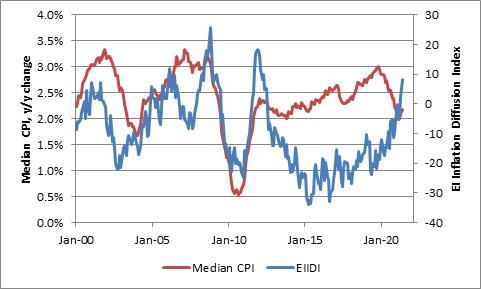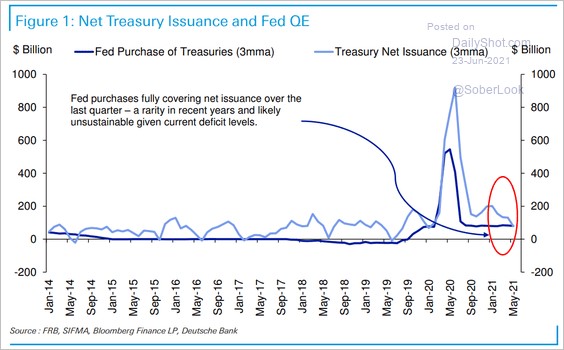At one time, when I worked for big global banks, I wrote a commentary daily. As a consequence, I would remark on almost literally every “important” Fed speech (the quotation marks being because, in the last decade or two, almost none of those speeches were at all meaningful since they had already given us the playbook in plain English). Nowadays, I delight in the fact that I don’t regularly have to comment on the drivel that dribbles from Fed mouthpieces. At times, though, it becomes too much to ignore and something needs to be said.
“A pretty substantial part, or perhaps all of the overshoot in inflation comes from categories that are directly affected by the re-opening of the economy such as used cars and trucks.” – Jerome Powell, June 22, 2021
This has become a very easy meme for Fed officials and disinflationistas: inflation is “transitory” over some unstated period, because almost everything we are seeing is the direct result of the abrupt reopening of the global economy.
Let’s examine that. In what way is the price increase in used cars and trucks due to the reopening?
In a normal cycle, there wouldn’t be sudden and huge demand for used cars all of a sudden. Nor would there be a sudden and huge demand for all sorts of other goods and services—shipping containers, chlorine, semiconductor chips, polypropylene, contract labor. In a normal cycle, demand recovers gradually and supply adjusts to the new demand gradually. Suppliers have time to read market signals and to bring new production on-line. A manufacturer of plastic doodads forecasts that in three months, he’s going to have enough demand to need a second shift—so, he puts advertisements in the paper and starts to selectively hire workers for a second shift. When the demand shows up, he is ready.
So clearly, the big mismatch between supply and demand in this cycle is the problem. And it isn’t just in used cars and trucks. It isn’t just in hotels and airfares. In fact, it is a myth that there is a small set of categories that are inflating wildly while other prices are inert. The chart below shows Enduring Investments’ Inflation Diffusion Index. More categories are seeing an acceleration in inflation, than are not.

Sure, a few categories add most of the acceleration, mathematically. That is always true. The combination of weight in the basket and size of the move means you can always point to one item or set of items that this month caused a big increase. I first mentioned my “microwave popping corn” analogy back in October. The fact that you can identify a particular reason that a kernel popped does not mean that you have found the root cause of all of the kernels popping. (As an aide, that article addressed the rise in used car prices that was just starting to happen. Back in October, when most of the world was still 90% on lockdown).
Again, there’s no question about the fact that one link in the causal chain is that demand came back before supply could prepare for it. But whose fault is that?
It isn’t merely the fact of the reopening. If Administration officials had simply decided on January 1st to let people go back out into the world again, demand would not have exploded overnight. Buying things requires money. In a normal cycle, suppliers would have started to hire for the reopening; they would have paid the workers, who would then have money; some of those people would go and buy used cars. It would surely have happened more quickly this time since the gate was being removed all at once. But many consumers would have had to spend time repairing their personal balance sheets and would not have suddenly gone out to buy new cars. Instead, what happened is that the Congress dropped a couple trillion dollars into consumers’ accounts, and—a crucial part of this sequence—the Fed bought the bonds that the Treasury had to issue in order to spray that money into the economy.
That last step is important. If the Treasury had just spent a trillion dollars and issued a trillion dollars’ worth of bonds, it would have had an impact but only because the money was being sent to consumers with a high propensity to consume, while the money being pulled in to pay for it was coming from investors with a lower propensity to consume (investors buying the bonds now have less cash to spend). So the spending package would matter, but not nearly as much as spending a trillion, and issuing bonds which the Federal Reserve expands the money supply to buy. A great chart from Deutsche Bank Research illustrates this cleanly: the Fed bought a huge proportion of the bonds the Treasury sold.

So trillions of dollars of the demand pressure are coming from debt being sold to a guy with a printing press. That is fake demand. It is not “due to the reopening.”
It’s due to spastic fiscal policy, coupled with profligate monetary policy. And, as the used car example shows, it started happening long before the economy was getting “back to normal.” So while Powell and his minions feign surprise and shock at the outcome, it only means they are either deceitful or incompetent.
The root cause here is absolutely clear, and the only reason that Chairman Powell can get away with claiming otherwise is that he is speaking to another body that is even more deceitful and incompetent.
